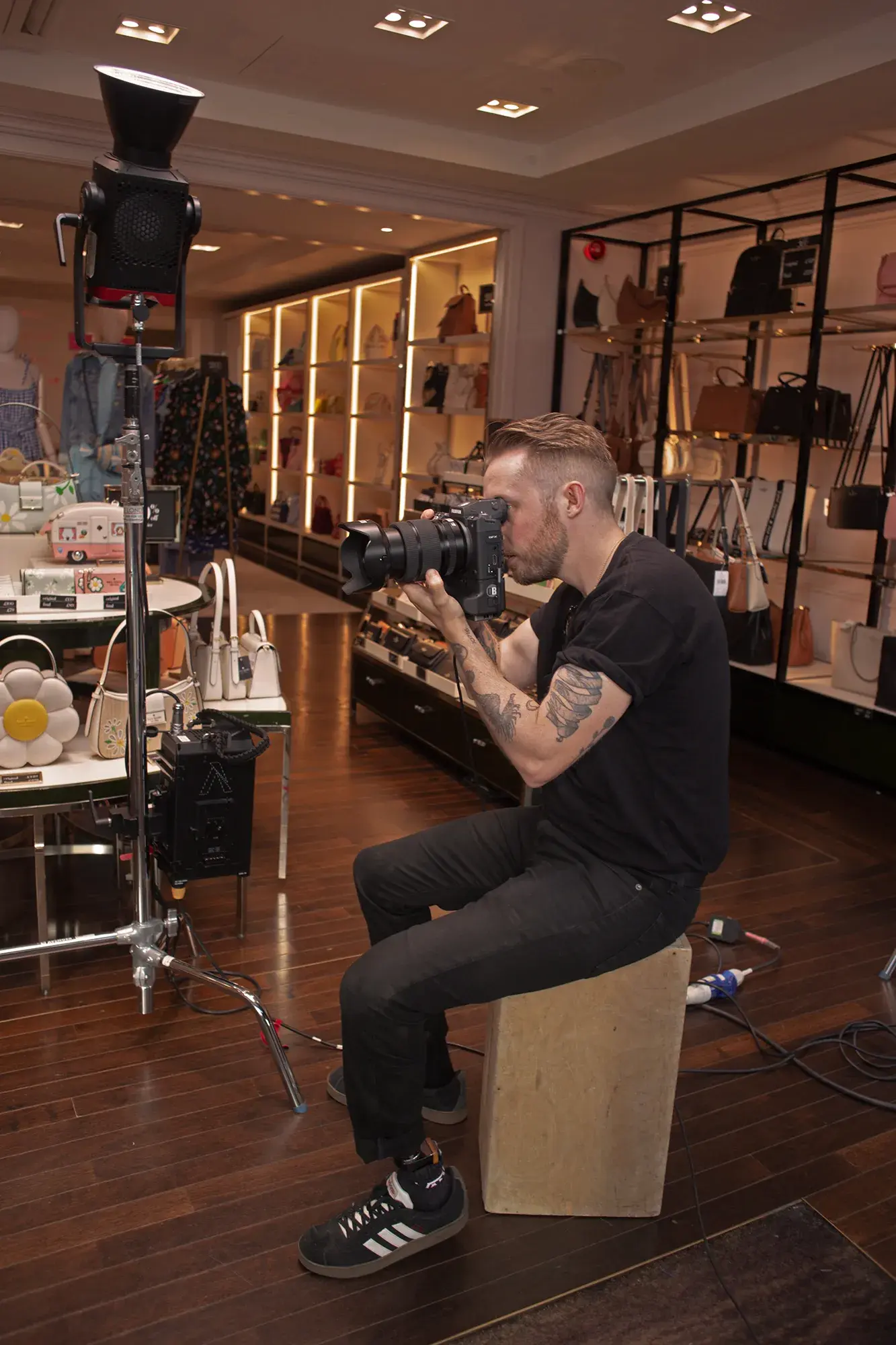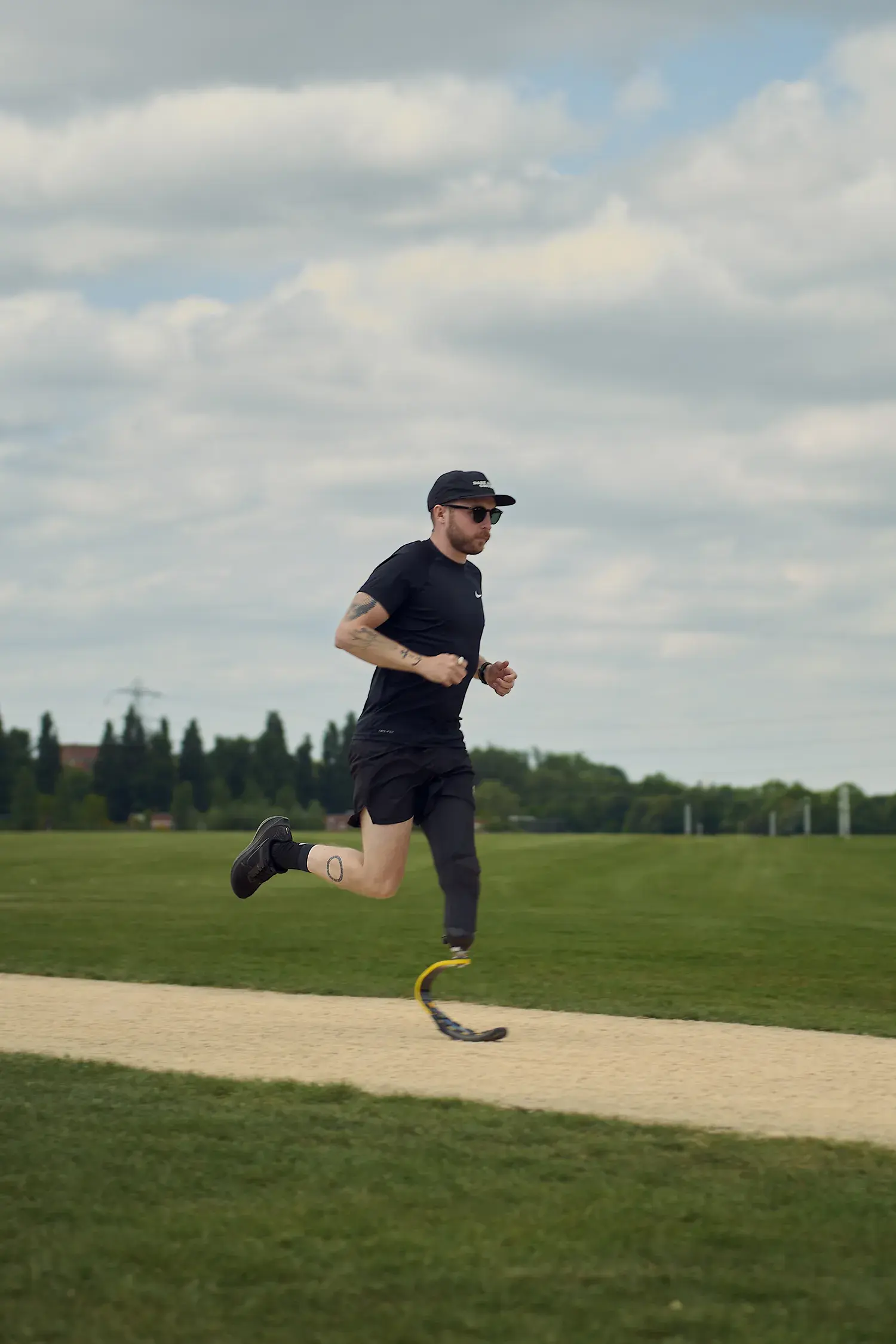Life after amputation – photographer Sonny on adapting to a new normal with Urban
About this post
We sat down with photographer Sonny to talk about life after his accident, capturing some of the world’s biggest musicians and how Urban helps him stay on top form.
Posted by
Emily from UrbanIn 2016, Sonny’s life changed in an instant. A motorbike accident resulted in the loss of his leg – and as a music photographer shooting high-profile stars, it took a toll on him mentally just as much as physically.
Fast-forward nine years and Sonny’s rewriting what strength looks like, using his story to inspire others. We sat down with him to find out what got him through and how Urban helped along the way.

Photography – carrying on the family craft
Sonny was born into creativity – his dad, aunt and cousin all successful photographers. So it wasn’t much of a surprise when his career took off in the same direction.
What started out as a bit of fun photographing his brothers’ band, carved the path for his future success as a music photographer: “It got to a stage where I was photographing over 100 bands in a year… I was 17, 18 years old and absolutely loved it. I moved to London, worked with the likes of NME and kept building to the point where I was doing bigger bands.”
And his passion for the job got him into once in a lifetime opportunities: “I was able to get in with Ronnie Wood from the Rolling Stones, he rang me up late one night and asked me to come to his studio to take some photos. I dropped everything to go, but little did I know it was his art studio. He’s actually a great artist, so I ended up doing a whole exhibition on it.”
After working at some of the biggest festivals, Glastonbury and British Summer Time to name a few, as well as for Spotify and NME Magazine, he’s had his fair share of celebrity experiences – from working with some of his favourite bands to watching a football game with Harry Styles in his hotel room.
The Sunday afternoon that changed everything
In 2016, what should’ve been a normal Sunday motorbike ride with a friend turned into a life-changing accident, resulting in one of Sonny’s legs being amputated: “You don't expect it, especially if it's an accident. The doctors weren’t able to say to me, do you want to keep your leg or not? I just woke up and it wasn't there.”
His biggest worry? Work. “It was a bit of a panic because I had a lot of work on at the time… My main worry was doing a physical job with a disability. I thought clients wouldn’t want to hire me and think I’d be too much of a hassle.”
Sonny had to manage his mental health alongside his physical recovery, working with psychiatrists as well as personal trainers to get himself better mentally and physically. But he made sure to take it at his own pace: “I did my first photoshoot five or six months after my accident, which was a bit much. But it took about a year and a half to fully recover – I wanted to make sure that I could walk properly in a healthy way.”

“If he can do it, I can do it” – how one moment changed his perspective for good
It took a year for Sonny to feel ready to publicly discuss his accident: “I was in my head about it, I didn’t want people to think I’ve changed, when I was still exactly the same person.”
But there was one moment that shifted in his perspective completely: “The Paralympic games were on and I saw Johnny Peacock running. I was like oh my God, you can run with a prosthetic? This is amazing. And then about a year later I met him and thanked him. We chatted about leg stuff, it was great.”
He realised how important it was for him to see what’s possible with a prosthetic, so he started sharing his own story on Instagram: “If anyone can take something away from it, then my job’s complete. Luckily I've had people reach out to me on Instagram in very different ways.”
“I was still able to photograph the Rolling Stones, do Glastonbury on the main stage, carrying all the equipment on me – with a disability. No one knew because I was wearing trousers, but even if I was wearing shorts it wouldn’t matter. Because at the end of the day, I'm there to do my job. I'm there to do the job that I started doing when I was 16.”
How Urban’s convenience brought sports massage back into Sonny’s schedule
Sonny was first introduced to the world of massage by his personal trainer during his recovery: “The sports massages weren’t fun, but I knew they helped and I knew I needed it.” But when his therapist moved to Australia, his sessions stopped too.
Fast-forward to now, and it’s his go-to when he’s feeling out of sync. He only books through Urban, since convenience is everything: “I just don't have the time to go somewhere and have to worry about parking, have to worry about getting the tube there, if my back's feeling under pressure or anything like that.”
The flexibility, along with the respectful approach of therapists, makes a real difference: “I usually don’t tell the therapist about my disability beforehand. So what happens is they rock up, I'm usually in my shorts, and not once has anyone said anything. They've just treated me like normal.”
The sessions also give him space to be specific: “If I wake up and something doesn’t feel great, I can book a session the same day. I can focus on certain elements and say to them this is hurting me today or this side is a bit worse than this side.
Things like that make it really handy – and the flexibility is great. I don't have to go anywhere. I can literally have it work around my schedule and it really, really works. And the inclusivity of not worrying about having a massage with a disability is amazing.”

The reality of living with a disability, and a message for others adapting to it
Seeing Johnny Peacock run in the Paralympics and watching double amputee Amy Mullins host a Ted Talk showed Sonny what was possible with a prosthetic – it gave him the boost he needed.
Sonny now uses his experience to highlight the realities of living with a prosthetic limb – both positive and challenging: “It's not always running and exercise and triathlons and ‘everything’s all great’. I'll be honest and say that there's times where my leg hurts, I'll tell you how expensive things are.”
He knows the mental toll it can take in the beginning, but he’s been in that rut and showed that you can, eventually, run straight through to the other side – both mentally and physically.
“The technology now is so advanced that you can live a very long and a happy life with a prosthetic. It’s only going to get better in that way, lighter and stronger and more adaptive to everyone's needs.”
His advice for anyone going through something similar? “Give yourself time. It took about two years for me to get back on my feet. I gave myself time to make sure that my physical health and my mental health were good. I realised if I rushed things, I'd risk creating problems for myself later.
People say life is short, but when you have an accident or something similar, make sure to just give yourself time to recover. Listen to yourself, don’t let other people determine what you want to do.”
“It's a real lifestyle change, but it's very doable – you’re able to completely live a normal life.”
Follow along with Sonny’s journey
Take a look at his photography work on Instagram, or stay up to date with his prosthetic journey here.
Or, if Sonny’s story has inspired you to share your own, we’d love to hear from you – share your story here.
